Welcome to the Amira-Avizo Software Use Case Gallery
Below you will find a collection of use cases of our 3D data visualization and analysis software. These use cases include scientific publications, articles, papers, posters, presentations or even videos that show how Amira-Avizo Software is used to address various scientific and industrial research topics.
Use the Domain selector to filter by main application area, and use the Search box to enter keywords related to specific topics you are interested in.
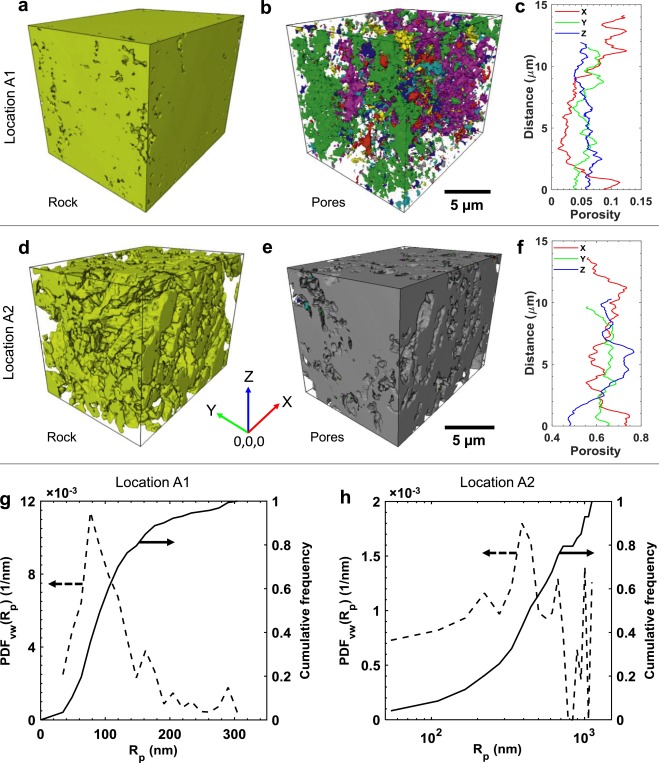
Our novel procedure of injecting oil after reactive transport has revealed previously unidentified (ghost) regions of partially-dissolved grains of carbonate rock. X-ray micro-tomography and FIB-SEM techniques were used to identify and resolve these ghost regions in three-dimensions at the nm- to µm-scale. Considering the solid part of the ghost regions as macro (bulk) pore space can result in the overestimation of porosity and permeability predi... Read more
Kamaljit Singh , Benaiah U. Anabaraonye , Martin J. Blunt , John Crawshaw
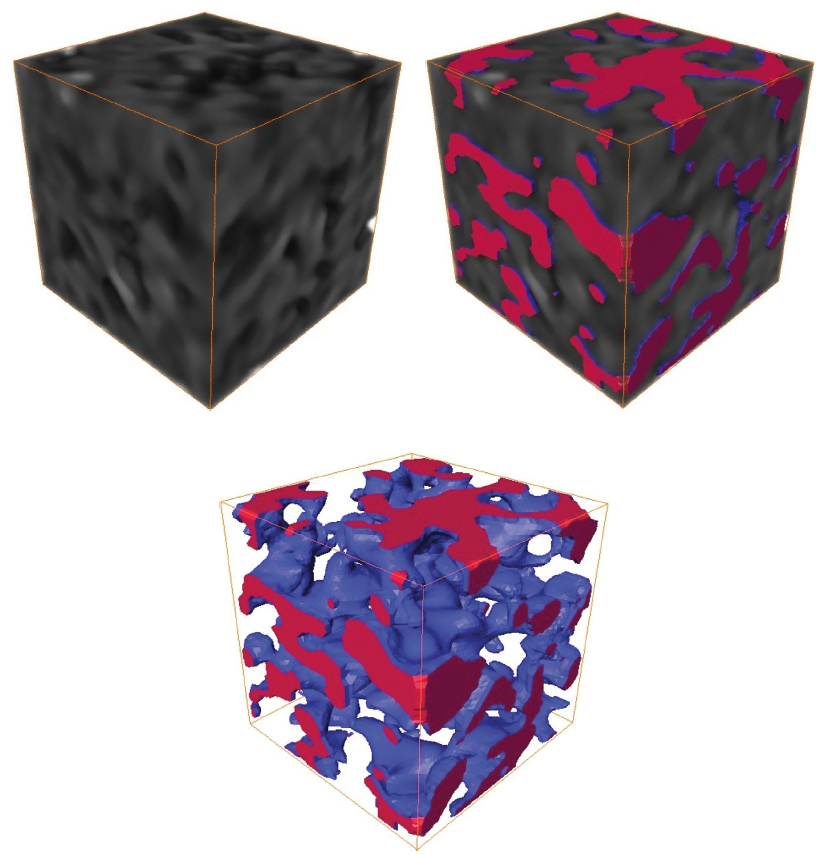
The aim of this paper was to develop a model that can characterize the actual micropore structures in coal and gain an in-depth insight into water’s seepage rules in coal pores under different pressure gradients from a microscopic perspective. To achieve this goal, long-flame coals were first scanned by an X-ray 3D microscope; then, through a representative elementary volume (REV) analysis, the optimal side length was determined to be 60 μm; subsequently, by using Avizo software, the coal ... Read more
Gang Zhou, Lei Qiu, Wenzheng Zhang, and Jiao Xue
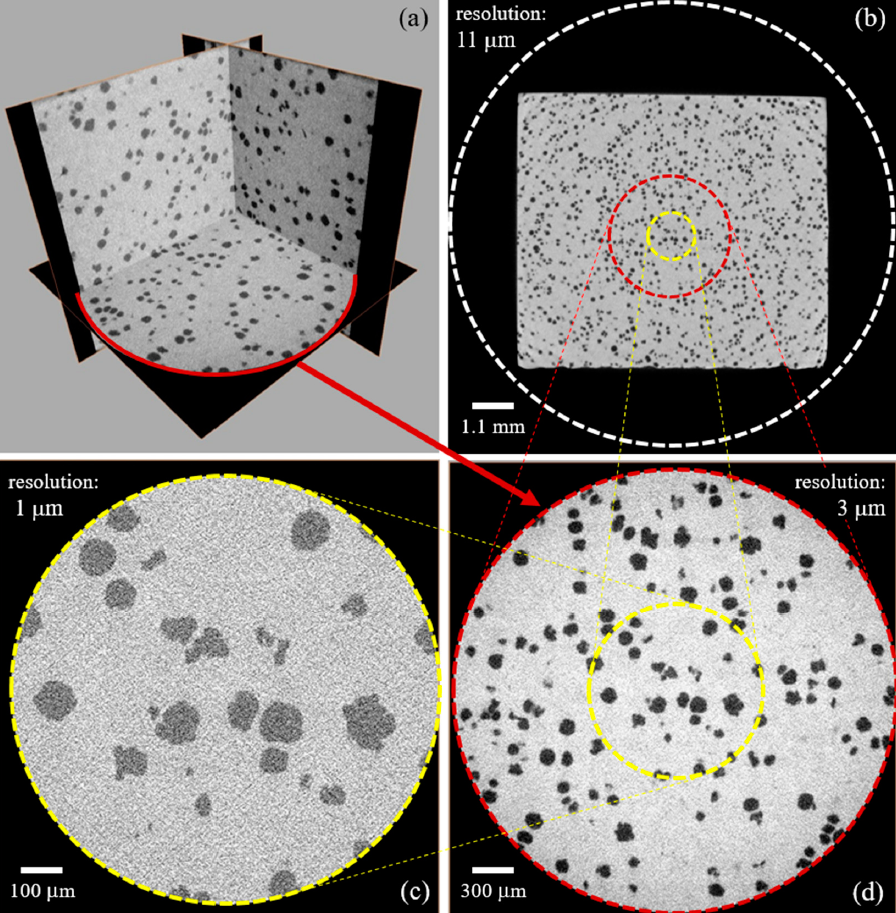
We describe in detail a methodology to estimate the effective elastic parameters of nodular cast iron, using micro-tomography in conjunction with multiscale finite elements. We discuss the adjustment of the image acquisition parameters, address the issue of the representative-volume choice, and present a brief discussion on image segmentation. In addition, the finite-element computational implementation developed to estimate the effective elastic parameters from segmented microstructural imag... Read more
Andre Pereira, Marcio Costa, Carla Anflor, Juan Pardal and Ricardo Leiderman
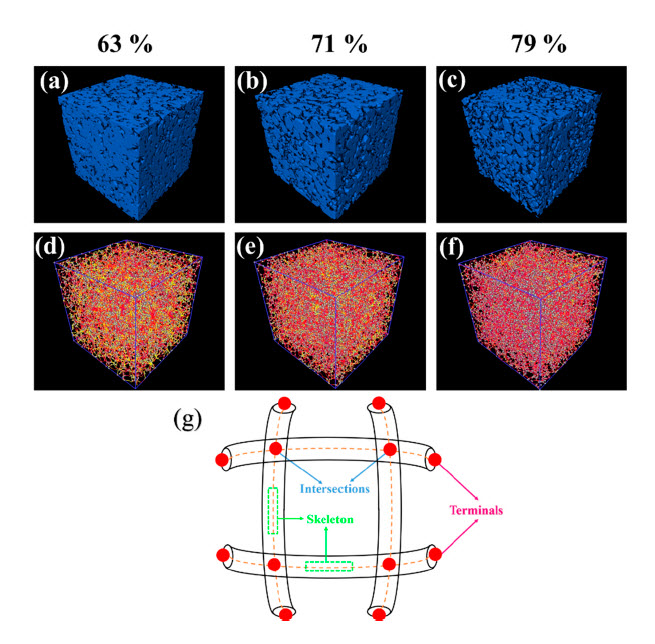
Porous binary Ti-10Mo alloys were prepared using non-spherical titanium, molybdenum powders by the powder metallurgy (PM) space holder technique. Based on the three-dimensional analysis of porosity characteristics, a detailed assessment of the effects of porosity on mechanical properties and corrosion resistances in phosphate-buffered saline (PBS) was carried out. For comparison, PM-fabricated CP-Ti with 50.5% porosity sintered at 1200 °C for 2 h and dense Ti-10Mo alloy sintered at 1450 °C ... Read more
Wei Xu, Xin Lu, Bing Zhang, Chengcheng Liu, Shaomin Lv, Shidi Yang and Xuanhui Qu
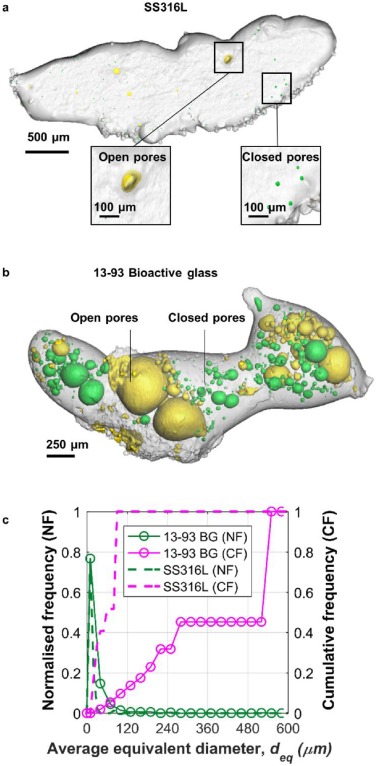
Laser-matter interactions in laser additive manufacturing (LAM) occur on short time scales (10-6 – 10-3 s) and have traditionally proven difficult to characterise. We investigate these interactions during LAM of stainless steel (SS316 L) and 13-93 bioactive glass powders using a custom built LAM process replicator (LAMPR) with in situ and operando synchrotron X-ray radiography. This reveals a range of melt track solidification phenomena as... Read more
Chu Lun Alex Leung, Sebastian Marussi, Michael Towrie, Jesus del Val Garcia, Robert C. Atwood, Andrew J. Bodey, Julian R. Jones, Philip J. Withers, Peter D.Lee
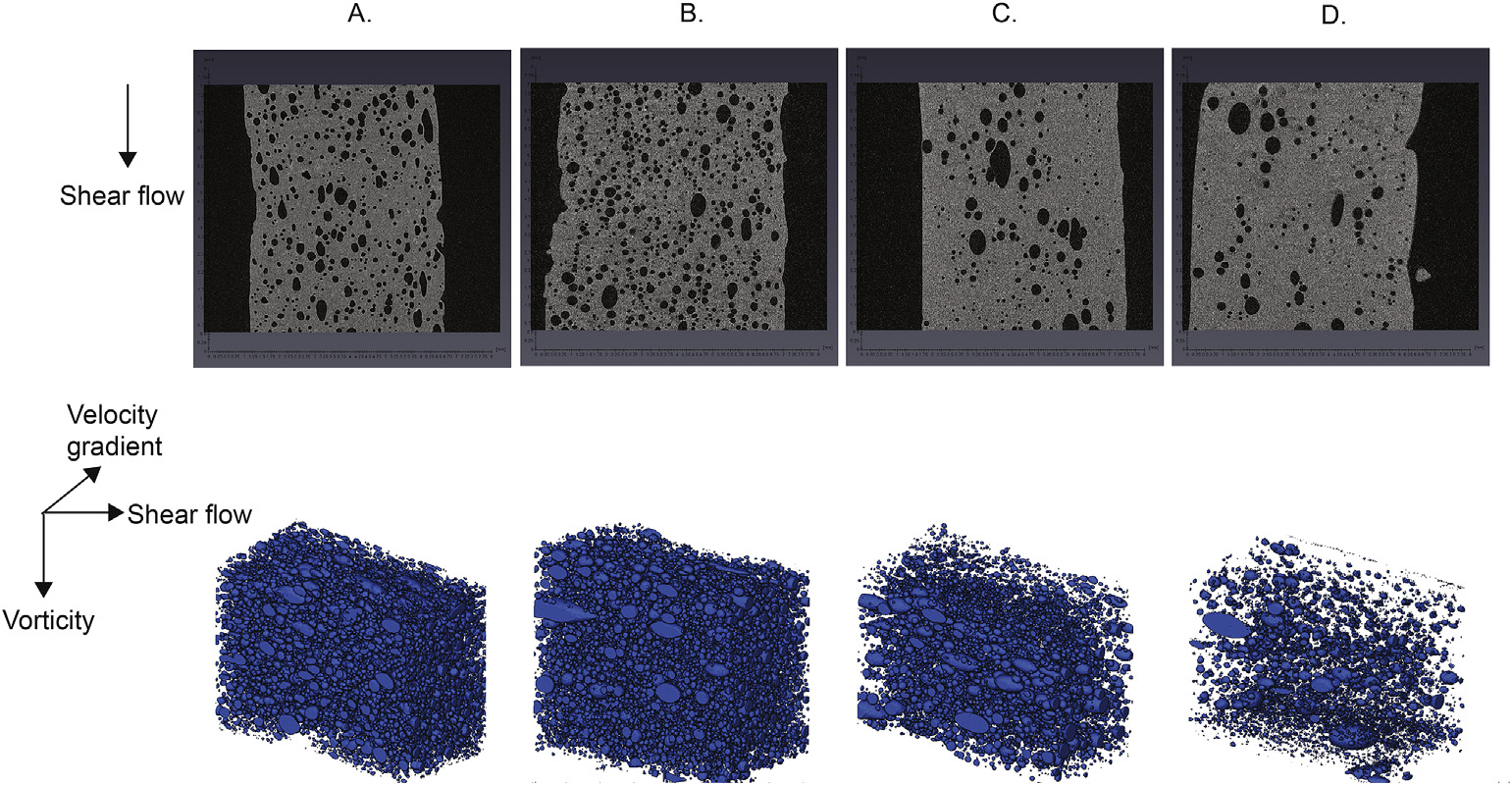
Air bubbles in calcium caseinate fibrous material enhances anisotropy
Dense calcium caseinate dispersions can be transformed into hierarchically fibrous structures by shear deformation. This transformation can be attributed to the intrinsic properties of calcium caseinate. Depending on the dispersion preparation method, a certain amount of air gets entrapped in the sheared protein matrix. Although anisotropy is obtained in the absence of entrapped air, the fibrous appearance and mechanical anisotropy of the calcium caseinate materials are more pronounced with... Read more
Zhaojun Wang, Bei Tian, Remko Boom, Atze Jan van der Goot
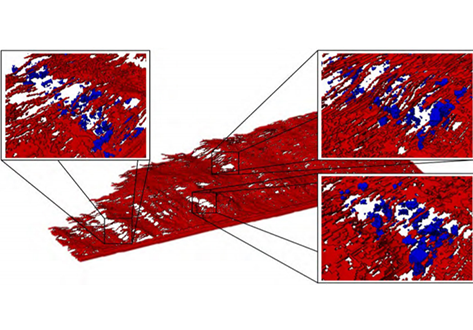
Understanding the near-threshold crack growth behavior in an aluminum alloy by x-ray tomography
The near-threshold behavior of long cracks is evaluated using pre-cracked flat dogbone specimens of a commercial aluminum alloy in two heat treatment states. Once the threshold was known, the crack initially introduced by cyclic compression was propagated under load control with approximately
constant range of the stress intensity factor at values close to the threshold values. The 3D morphology of the crack and the spatial distribution of the primary precipitates obtained by µ-CT were... Read more
Marcel Wicke, Angelika Brueckner-Foit, Tina Kirsten, Martina Zimmermann, Fatih Buelbuel, Hans-Juergen Christ
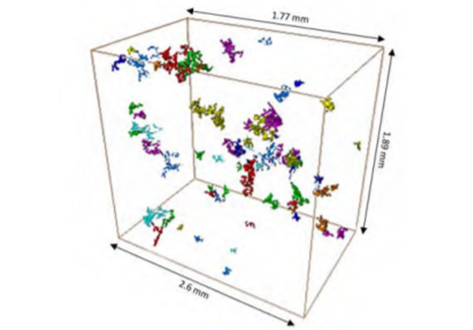
3D characterization of the fracture mechanisms of a Fe-rich Al-Si-Cu alloy
The effect of the defect size and morphology on the fatigue damage evolution was analysed in a recycled Al-Si-Cu alloy by micro-computed tomography and scanning electron microscopy. Fatigue tests were performed and the different crack initiation scenarios were characterized and classified. The interaction between shrinkage and gas pores was the key crack initiation mechanism and the ß-Al5FeSi particles did not play any role in the crack initiation phase. However, crack path analysis indicate... Read more
Angelika Brueckner-Foit, Inigo Bacaicoa, Martin Luetje, Marcel Wicke, Andreas Geisert, Martin Fehlbier
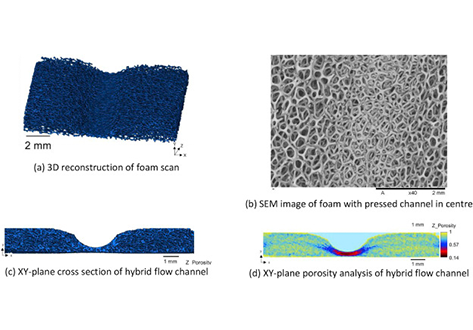
The flow distribution behaviour of open-cell metallic foam fuel cell flow-fields are evaluated using ex-situ optical analysis and X-ray computed tomography (X-ray CT). Five different manifold designs are evaluated and flow distribution and pressure drop ... Read more
A.Fly, D.Butcher, Q.Meyer, M.Whiteley, A.Spencer, C.Kim, P.R.Shearing, D.J.L.Brett, R.Chen
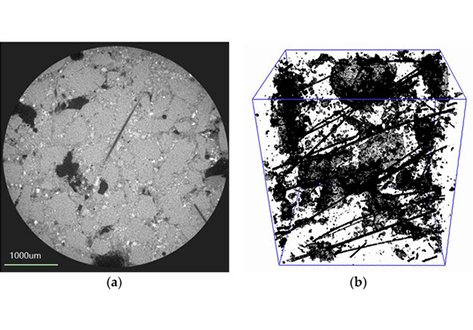
In this study, chemically bonded phosphate ceramic (CBPC) fiber reinforced composites were made at indoor temperatures. The mechanical properties and microstructure of the CBPC composites were studied. The CBPC matrix of aluminum phosphate binder, metakaolin, and magnesia with different Si/P ratios was prepared. The results show that when the Si/P ratio was 1.2, and magnesia content in the CBPC was 15%, CBPC reached its maximum flexural strength. The fiber reinforced CBPC composites were prep... Read more
Zhu Ding; Yu-Yu Li; Can Lu; Jian Liu
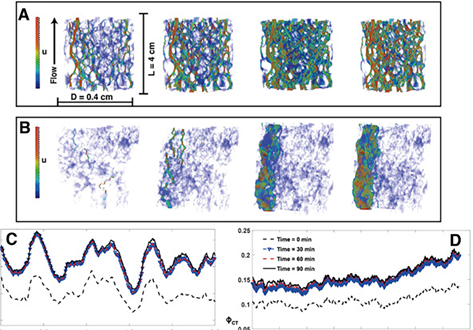
We have experimentally investigated the impact of heterogeneity on the dissolution of two limestones, characterised by distinct degrees of flow heterogeneity at both the pore and core scales. The two rocks were reacted with reservoir-condition CO2-saturated brine at both scales and scanned dynamically during dissolution. First, 1 cm long 4 mm... Read more
Menke H.P; Reynolds C.A.; Andrew M.G.; Pereira Nunes J.P.; Bijeljic B; Blunt M.J.
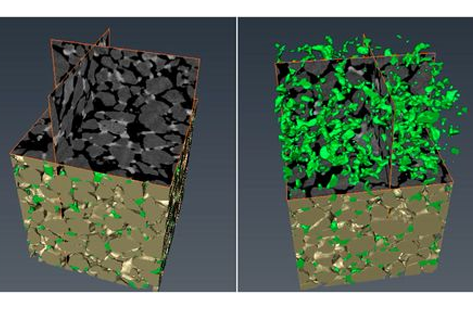
We introduce the application of microbial-induced calcite precipitation via the ureolytic soil bacterium Sporosarcina Pasteurii in freeze-dried form, as a means of enhancing overall MICP efficiency and reproducibility for geotechnical engineering applications. We show that the execution of urea hydrolysis and CaCO3 precipitation persist as a “cell-free” mechanism upon the complete breakdown of rehydrated cell clusters. Further, strength and stiffness parameters of bio-cemented ... Read more
Dimitrios Terzis, Lyesse Laloui
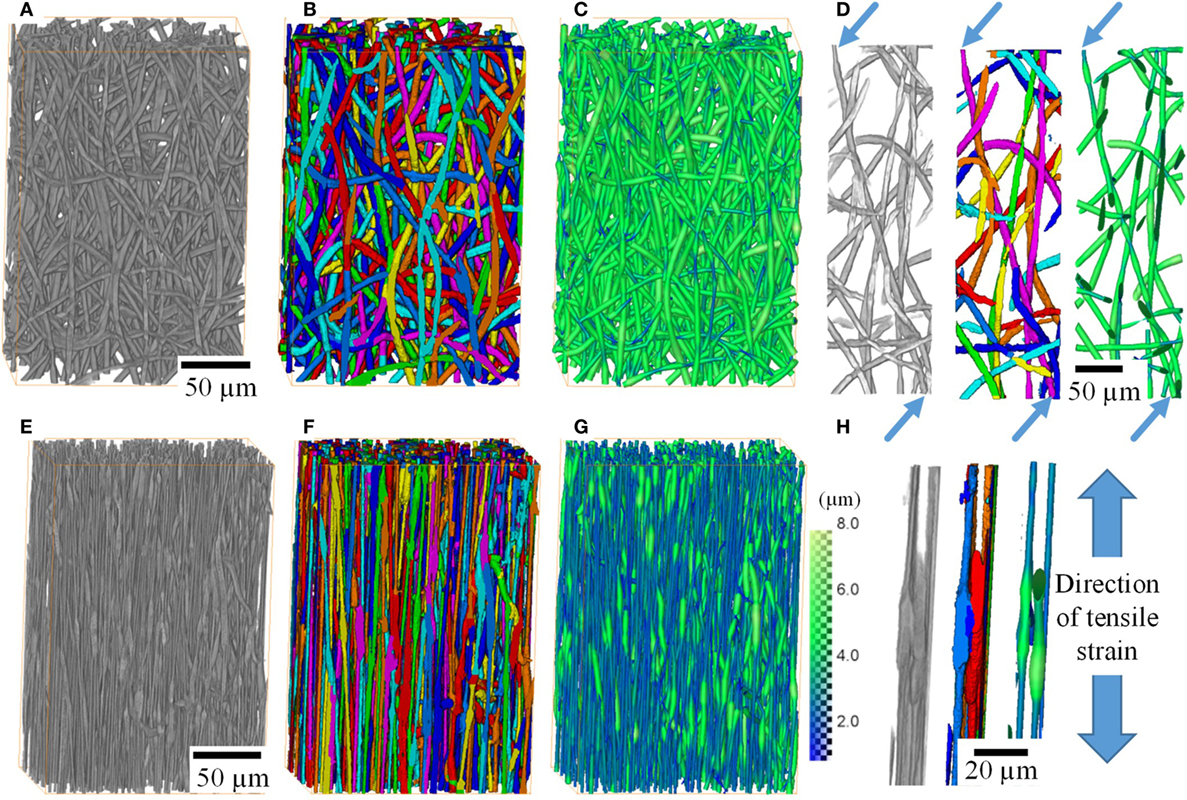
X-ray Tomographic Imaging of Tensile Deformation Modes of Electrospun Biodegradable Polyester Fibers
Electrospun constructs for the repair of load-bearing tissues are required to have adequate mechanical properties. However, the failure mechanisms of electrospun fibrous materials are not well understood. Existing literature focuses on failure modes of individual fibers and/or on bulk mechanical properties of whole fiber mats.
Electrospinning allows the production of fibrous networks for tissue engineering, drug delivery, and wound healing in health care. It enables the production of c... Read more
Jekaterina Maksimcuka; Akiko Obata ; William W. Sampson ; Remi Blanc ; Chunxia Gao ; Philip J. Withers ; Olga Tsigkou ; Toshihiro Kasuga ; Peter D. Lee ; Gowsihan Poologasundarampillai
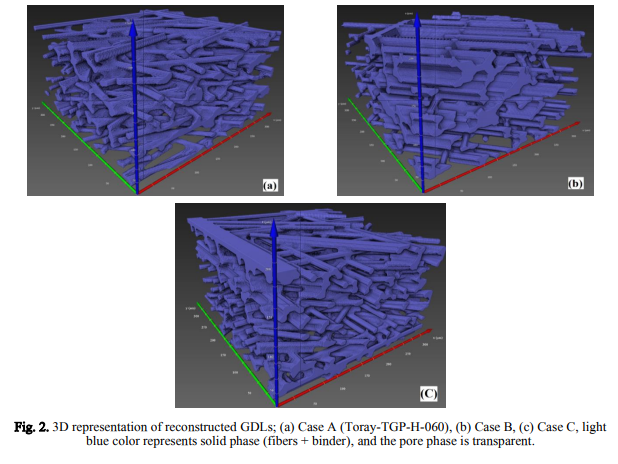
Stochastic reconstruction of carbon fiber paper gas diffusion layers of PEFCs: A comparative study
Fuel cells are electrochemical devices that convert the chemical energy of fuels into electrical energy. An ideal option for a wide variety of portable, stationary, and automotive applications is using the polymer electrolyte
fuel cells due to their modular design, high efficiency, and environmental benefits.
A 3D microstructure of the non-woven gas diffusion layers (GDLs) of polymer electrolyte fuel cells (PEFCs) is reconstructed using a stochastic method. For a commercial GDL, ... Read more
Sepehr Sima Afrookhteh, Jalil Jamali, Mohsen Shakeric, Majid Baniassadi

Three dimensional (3D) composites were proposed over 40 years ago in an attempt to overcome the shortcomings of 2D laminates, by incorporating fibres into the through-thickness direction. 3D weaving offer significant manufacturing benefits as well as creating versatile textiles having a range of 3D architectures.
The development of fatigue damage in a glass fibre modified layer-to-layer three dimensional (3D) woven composite has been followed by time-lapse X-ray computed tomograp... Read more
B. Yu, R. Blanc, C. Soutis, P.J. Withers
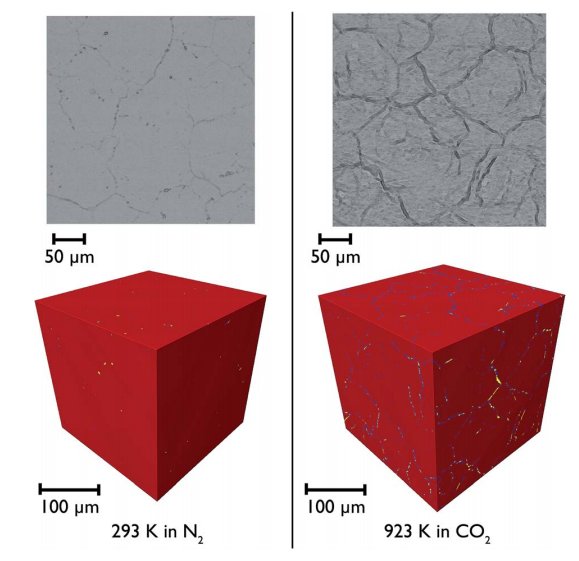
In situ studies of materials for high temperature CO2 capture and storage
Carbon capture and storage (CCS) offers a possible solution to curb the CO2 emissions from stationary sources in the coming decades, considering the delays in shifting energy generation to carbon neutral sources such as wind, solar and biomass.
The most mature technology for post-combustion capture uses a liquid sorbent, amine scrubbing. However, with the existing technology, a large amount of heat is required for the regeneration of the liquid sorbent, which... Read more
Matthew T. Dunstan, Serena A. Maugeri, Wen Liu, Matthew G. Tucker, Oluwadamilola O. Taiwo, Belen Gonzalez, Phoebe K. Allan, Michael W. Gaultois, Paul R. Shearing, David A. Keen, Anthony E. Phillips, Martin T. Dove, Stuart A. Scott, John S. Dennish and Clare P. Grey
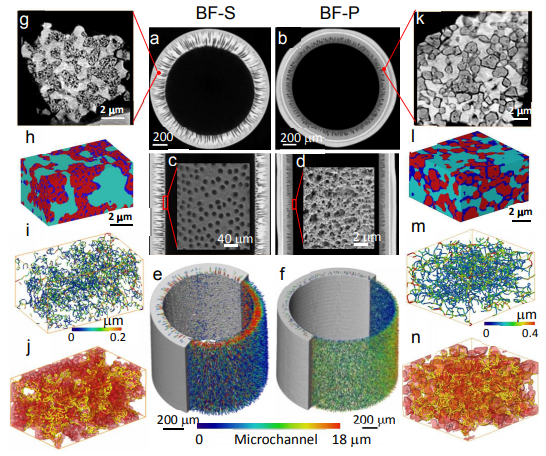
Mass transport can significantly limit the rate of reaction and lead to concentration polarization in electrochemical devices, especially under the conditions of high operating current density.
In this study we investigate hierarchically structured micro-tubular solid
oxide fuel cells (MT-SOFC) fabricated by phase inversion technique and quantitatively assess the mass transport and electrochemical performance improvement compared to a conventional tubular SOFC. We present pioneer... Read more
Xuekun Lu, Tao Li, Antonio Bertei, Jason I S Cho , Thomas M.M. Heenan , Rabuni Mohamad, Kang Li, Dan JL Brett, Paul R Shearing
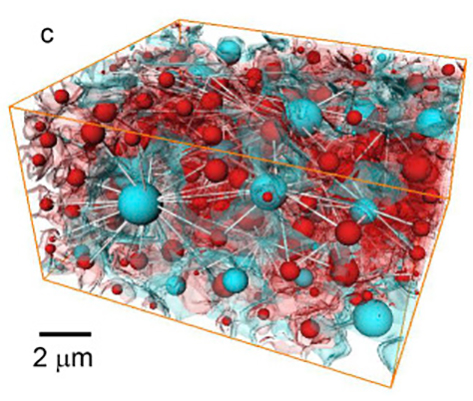
Correlation between triple phase boundary and the microstructure of Solid Oxide Fuel Cell anodes
This study aims to correlate the active triple phase boundaries (TPBs) to the variation of as-prepared anode microstructures and Ni densifications based on the reconstructed 3D volume of an SOFC anode, providing a point of comparison with theoretical studies that reveal the relationship of TPBs and the material microstructure using randomly packed spheres models.
Read more
Xuekun Lu, Thomas M.M. Heenan, Josh J. Bailey, Tao Li, Kang Li, Daniel J.L. Brett, Paul R. Shearing, Electrochemical Innovation Lab, Department of Chemical Engineering, University College London, London
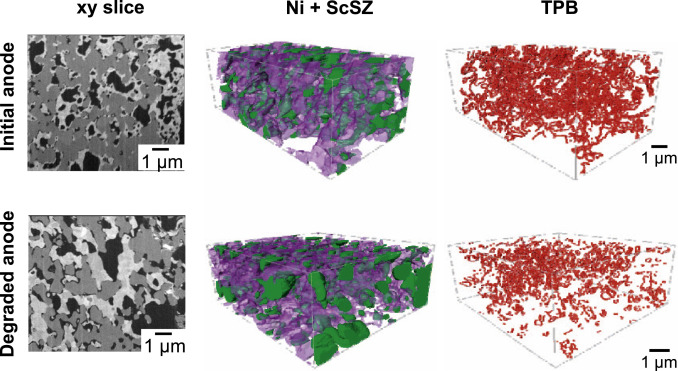
Nickel/zirconia-based nanostructured electrodes for solid oxide fuel cells suffer from poor stability even at intermediate temperature.
This study quantifies the electrochemical and microstructural degradation of nanostructured electrodes by combining 3D tomography, electrochemical impedance spectroscopy (EIS) and mechanistic modeling. For the first time, the electrochemical degradation of nanostructured electrodes is quantified according to the fractal nature of the three-phase bounda... Read more
A. Bertei, E. Ruiz-Trejo, K. Kareh, V. Yufit, X. Wang, F. Tariq, N.P. Brandon,
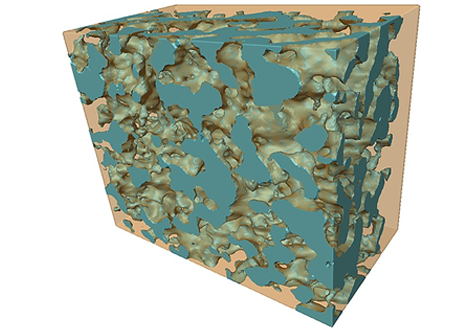
A simple chemical bath deposition is used to coat a complex porous ceramic scaffold with a conformal Ni layer.
The resulting composite is used as a solid oxide fuel cell electrode, and its electrochemical response is measured in humidified hydrogen. X‐ray tomography is used to determine the microstructural characteristics of the uncoated and Ni‐coated porous structure, which include the surface area to total volume, the radial pore size, and the size of the necks between the pores.... Read more
Dr. Enrique Ruiz‐Trejo, Milla Puolamaa, Brian Sum, Dr. Farid Tariq, Dr. Vladimir Yufit, Prof. Nigel P. Brandon

The most common means of fabricating membrane electrode assemblies (MEAs) for polymer electrolyte fuel cells (PEFCs) involves a hot-press step. The conditions used to perform the hot-press impacts the performance and durability of the fuel cell.
However, the hot-press process is not essential for achieving operational MEAs and some practitioners dispense with the hot-press stage altogether by using a self-assembled approach. By performing the integration of the components in-situ durin... Read more
Jennifer Hack, T. M. M. Heenan, F. Iacoviello, N. Mansor, Q. Meyer, P. Shearing, N. Brandon and D. J. L. Brett